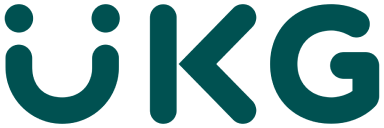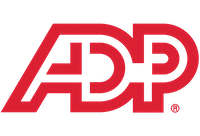Key takeaways:
UKG vs ADP: Which is better?
UKG Pro and ADP Workforce Now are two major human resources (HR) software solutions with comparable payroll, benefits administration, recruiting, onboarding, and performance management features. Both products target mid-to-large-size employers needing a range of customizable HR features in an all-in-one platform. However, where UKG Pro is tailored to businesses valuing a feature-rich and intuitive experience for their employees, ADP is mainly aimed at scaling businesses needing advisory support and the flexibility to add features as they grow.
Whether you’re looking to switch from UKG Pro to ADP Workforce Now or have narrowed down your list to these two, consider how they compare based on price and other top features. If neither meets your needs, check out our HR Software Guide for other solutions.
| UKG Pro | ADP Workforce Now | |
|---|---|---|
| Pricing Jump to comparison ↓ |
Quote based on number of employees and features needed; relatively expensive according to user reviews | Quote based on number of employees, subscription tier, and add-ons needed; additional expenses for HR services |
| Payroll Jump to comparison ↓ |
Basic functionality | Basic functionality plus options for HR outsourcing or PEO services |
| Benefits administration Jump to comparison ↓ |
Bring your own | Bring your own plus personal recommendations |
| Recruiting Jump to comparison ↓ |
Included in package | Add-on with ZipRecruiter partnership |
| Performance management Jump to comparison ↓ |
Included in package with an emphasis on continuous feedback and succession planning | Add-on talent, learning, and compensation management modules with customizable review cycles and development courses |
| Try UKG Pro | Try ADP Workforce Now |
Rather watch a video overview of UKG and ADP? Check it out below.
UKG Pro: Better for mid-to-large-sized businesses focused on employee experience

With the merging of Ultimate Software Incorporated and Kronos Incorporated in 2020, the resulting Ultimate Kronos Group (UKG) is one of the largest human capital management (HCM) platforms on the market today. With software solutions suitable to businesses of varying sizes and needs, UKG Pro is geared toward mid-to-large-sized companies wanting to optimize the employee experience.
In every UKG Pro feature, UKG illustrates how it benefits the company and the employee. With employee-focused features like dynamic dashboards, mobile applications, career learning modules, financial wellness, and simplified benefits administration, UKG reduces the administrative burden on HR teams while ensuring the employee remains top-of-mind in every feature.
Pros
Cons
Also read: HRIS vs. HRMS vs. HCM
ADP Workforce Now: Better for scaling businesses needing flexibility

ADP is one of the world’s largest HR software companies, with over 70 years of experience. Similar to UKG, ADP offers a range of products, from standalone solutions for specific HR needs — like time and attendance or talent acquisition — to full-service, all-in-one human resources information systems (HRIS). ADP Workforce Now is one such HRIS, with tiered pricing, advisory services, and other add-on features to accommodate fast-growing businesses as they scale.
Pros
Cons
ADP offers some of the most comprehensive HRIS products on the market, but it is not always the right solution for everyone. Check out our Top 6 ADP Vendor Competitors & Alternatives for comparable ADP products.
UKG vs ADP: A detailed comparison
Pricing
UKG and ADP do not disclose prices on their websites; interested buyers must contact their sales team for a quote. UKG Pro follows similar HR software-as-a-service (SaaS) companies, with employers paying a monthly fee based on the number of employees in their organization and the modules they need. In contrast, ADP Workforce Now has clearly defined subscription tiers and add-on modules, granting buyers some idea of their options before contacting ADP for a quote.
Nevertheless, UKG and ADP’s hidden fees make it difficult to conclude which one offers the most value for the money. Businesses should, therefore, take note of their employee headcount and compare both platforms’ available features below to determine which one best satisfies their needs.
Payroll
| UKG Pro | ADP Workforce Now | |
| International payroll add-on | Yes | Yes |
| Mobile app | Yes | Yes |
| On-demand pay | Yes | Yes |
| Paycards | Yes | Yes |
| Tax support | Yes | Yes |
UKG Pro and ADP Workforce Now offer comparable payroll software features, including expert tax support, on-demand pay capabilities, and an employee self-service mobile application. However, they differ primarily in their approaches to supporting payroll processes as companies move into international markets.
Benefits administration
| UKG Pro | ADP Workforce Now | |
| EDI | Yes | Yes |
| Mobile app | Yes | Yes |
| Financial wellness | Yes | Yes |
| Charity donation options | Yes | No |
| Compliance | Yes | Yes |
| Third-party broker support | Yes | Yes |
UKG Pro and ADP Workforce Now are designed to accommodate employers with already established benefit plans. Both products integrate with major insurance carriers so employers can manage employee benefits plans, including employee enrollments, changes, terminations, or qualifying life events, directly in the software. These changes are then automatically communicated to carriers.
However, UKG Pro’s approach to benefits administration is more employee-centric, concerned ultimately with aiding employees in making the right decisions for their particular situations. While ADP Workforce Now offers similar capabilities, it primarily focuses on providing features to help employers remain compliant.
Recruiting
UKG Pro includes recruiting features as a standard module in its HRIS platform. In contrast, ADP Workforce Now users must pay extra for their talent acquisition add-on. Despite this, ADP Workforce Now’s talent acquisition management contains more enhanced functionality through their partnership with ZipRecruiter, such as a customized career site and access to over 25,000 job boards.
| Recruiting | ||
| UKG Pro | ADP Workforce Now | |
| Native recruiting | Yes | Add-on |
| Career site | no | Yes |
| Job posting distribution | Yes | Yes |
| Social recruiting | Yes | Yes |
| Job board integrations | Yes | Yes |
| Recruiting-specific reports | Yes | Yes |
Performance management
Similar to recruiting, UKG Pro already includes a performance management module as part of its overall suite. ADP Workforce Now customers, on the other hand, must purchase performance, compensation, and learning management modules as additional features to any of their subscription tiers.
Despite this, both platforms offer similar talent management features, from continuous feedback to performance cycle management, learning and development courses, and goal setting and tracking.
| Performance Management | ||
| UKG Pro | ADP Workforce Now | |
| Performance review cycles | Yes | Add-on |
| Goal setting and tracking | Yes | Add-on |
| Continuous feedback | Yes | Add-on |
| Career development support | Yes | Add-on |
| Compensation management | Yes | Add-on |
| Sentiment analysis | Yes | Yes |
| Succession planning | Yes | Add-on |
UKG vs ADP: Ready to choose?
UKG Pro and ADP Workforce Now are two of the biggest names for midsize businesses looking to consolidate their HR tech stack for a more streamlined experience. However, choosing the right one depends on what HR software aspects are most important to you.
For a more intuitive, employee-focused experience, choose UKG Pro for its benefit packages and focus on employee career development. For fast-growing businesses needing flexible solutions to accommodate them as they scale, choose ADP Workforce Now for its advisory services and breadth of product add-ons.
However, if none of these solutions fit, check out our HR Software Guide to browse other software on the market.





